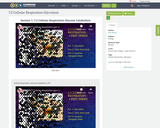
4315 Results



These are step by step tutorial handouts for using a Flex Mendel or flexMendel open source 3D printer. There are matching videos located on YouTube at:https://www.youtube.com/playlist?list=PLYZc2FR9EwWYF16SVbPzijWCRbMGpE38uandhttps://www.youtube.com/playlist?list=PLYZc2FR9EwWY7tOr0E_ncfZDYmR3NyQfo
- Subject:
- Applied Science
- Material Type:
- Module
- Author:
- John Bordeau
- Date Added:
- 10/18/2019

Interested in research but can't find any opportunities? Look no further! Check out these quick strategies for getting started with research!
Learning Outcomes:
Identify three strategies for finding research opportunities.
- Subject:
- Arts and Humanities
- Life Science
- Physical Science
- Social Science
- Material Type:
- Activity/Lab
- Interactive
- Module
- Author:
- Kian Ravaei
- Xinyi(Alex) Yan
- Giselle Burns
- Date Added:
- 07/12/2021





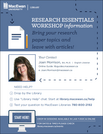
This workbook is used for library instruction for first year English courses. The model blends online tutorials, learning activies, and drop-in workshops. The learning objectives are detailed in the workbook.
- Subject:
- English Language Arts
- Material Type:
- Module
- Author:
- Joan Morrison
- Jody Nelson
- Date Added:
- 12/10/2018

Corresponds with Chapter 5 Openstax Biology 2e "Structure and Function of Plasma Membrane"
- Subject:
- Life Science
- Material Type:
- Module
- Author:
- Urbi Ghosh
- Date Added:
- 08/05/2019
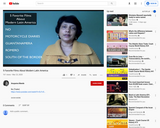
This video offers a brief review of 5 wonderful films that focus on specific topics in modern Latin American History.
- Subject:
- Arts and Humanities
- Ethnic Studies
- History
- Social Science
- Visual Arts
- World Cultures
- World History
- Material Type:
- Lecture
- Lesson
- Module
- Teaching/Learning Strategy
- Unit of Study
- Author:
- Anupama Mande
- Date Added:
- 07/09/2020

This is a 5th Grade lesson/module on Author's Point of View. This can be given to students for e-learning or taught in class with devices.
- Subject:
- English Language Arts
- Material Type:
- Module
- Author:
- Shelby Fischman
- Date Added:
- 07/24/2020
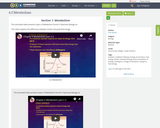

Unit Summary
This unit on thermal energy transfer begins with students testing whether a new plastic cup sold by a store keeps a drink colder for longer compared to the regular plastic cup that comes free with the drink. Students find that the drink in the regular cup warms up more than the drink in the special cup. This prompts students to identify features of the cups that are different, such as the lid, walls, and hole for the straw, that might explain why one drink warms up more than the other.
Students investigate the different cup features they conjecture are important to explaining the phenomenon, starting with the lid. They model how matter can enter or exit the cup via evaporation However, they find that in a completely closed system, the liquid inside the cup still changes temperature. This motivates the need to trace the transfer of energy into the drink as it warms up. Through a series of lab investigations and simulations, students find that there are two ways to transfer energy into the drink: (1) the absorption of light and (2) thermal energy from the warmer air around the drink. They are then challenged to design their own drink container that can perform as well as the store-bought container, following a set of design criteria and constraints.
This unit builds toward the following NGSS Performance Expectations (PEs) as described in the OpenSciEd Scope & Sequence: MS-PS1-4*, MS-PS3-3, MS-PS3-4, MS-PS3-5, MS-PS4-2*, MS-ETS1-4. The OpenSciEd units are designed for hands-on learning and therefore materials are necessary to teach the unit. These materials can be purchased as science kits or assembled using the kit material list.
- Subject:
- Physical Science
- Material Type:
- Activity/Lab
- Lesson
- Module
- Provider:
- OpenSciEd
- Date Added:
- 09/10/2019

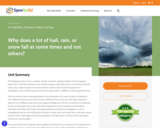
The goals of OpenSciEd are to ensure any science teacher, anywhere, can access and download freely available, high quality, locally adaptable full-course materials. REMOTE LEARNING GUIDE FOR THIS UNIT NOW AVAILABLE!
This unit on weather, climate, and water cycling is broken into four separate lesson sets. In the first two lesson sets, students explain small-scale storms. In the third and fourth lesson sets, students explain mesoscale weather systems and climate-level patterns of precipitation. Each of these two parts of the unit is grounded in a different anchoring phenomenon.
- Subject:
- Applied Science
- Atmospheric Science
- Environmental Science
- Physical Science
- Material Type:
- Full Course
- Lesson
- Lesson Plan
- Module
- Teaching/Learning Strategy
- Unit of Study
- Provider:
- OpenSciEd
- Author:
- OpenSciEd
- Date Added:
- 08/18/2020
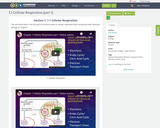
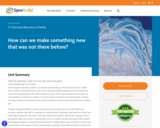
To pique students’ curiosity and anchor the learning for the unit in the visible and concrete, students start with an experience of observing and analyzing a bath bomb as it fizzes and eventually disappears in the water. Their observations and questions about what is going on drive learning that digs into a series of related phenomena as students iterate and improve their models depicting what happens during chemical reactions. By the end of the unit, students have a firm grasp on how to model simple molecules, know what to look for to determine if chemical reactions have occurred, and apply their knowledge to chemical reactions to show how mass is conserved when atoms are rearranged.
- Subject:
- Life Science
- Physical Science
- Material Type:
- Lesson
- Lesson Plan
- Module
- Teaching/Learning Strategy
- Unit of Study
- Provider:
- OpenSciEd
- Author:
- OpenSciEd
- Date Added:
- 09/16/2020
